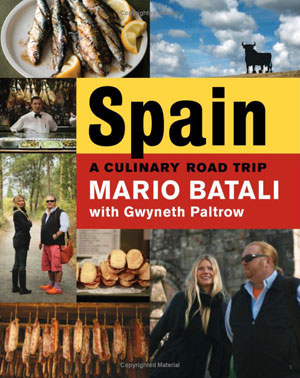If you nose around for cookbooks in London as much as I do,
you become aware that it’s kind of hard to find American cookbooks; in
bookstores the “American” section can be alarmingly small – just a copy of the New York
Times Cookbook and something on barbeques and something that may as well
be entitled Southern Cooking Without Tears. I don’t watch the Food Channel here but I am
aware that Ina Garten is well-known enough to have her books out now
domestically in the UK; and if I go somewhere US-friendly like Foyles there is
a decent US section there, nothing Canadian alas (where I got the cooking bug,
first and second-time around). So
charity shops are where I find the American books I actually want, since
Americans tend to pass through London and leave these lovely but rather heavy
things behind. Again, I feel lucky in
this, as I would rather help a charity and myself at the same time than order a
book in person or online; the purchase somehow means more, and the books that can turn up make the
sometimes-endless hunt more than worthwhile.
One American cookbook I came across recently was Spain: A Culinary Road Trip
by Mario Batali with Gwyneth Paltrow (as you can see when I say American I don't necessarily mean it's about food from the US).
Based on a tv series (I think; I never saw it), it has Batali, Paltrow, cookbook author Mark Bittman and Spanish
actress Claudia Bassols going through Spain, through every region, trying this
and sampling that, hanging out and seeing the sights as well as eating the
food. It’s a loose-legged book, not
pretending to know everything or see everything, but if you imagine you are
with them, on the road and interested in everything, it is almost as good as
visiting Spain itself. Spanish cooking
is new to me; the UK being so close to Spain it is easier for me to try these
things than if I was back in Canada.
(Chorizo is something I didn’t know about until I moved to London.)
I’ve been cooking a lot of chicken lately, and this dish is
simple enough to try without too much hassle.
I had to go to Portobello to get the pimentos (preserved red peppers,
whole in a can) but I imagine the roasted ones in jars would do just as
well.
Homely Chicken
This recipe is for chicken; one 3 ½ pound one cut into eight
pieces. If chicken butchery is not your
thing, just get eight pieces, preferably thighs and drumsticks.
Mince two cloves of garlic; rub the chicken with it and a
tablespoon of salt, then cover it and put it in the fridge for an hour.
Heat two tablespoons of oil in your cooking pot (one that
can hold all the chicken in a “snug layer”; I have no such sized-pot, but just
make sure it can all get in reasonably tightly, two layers if needed). Turn up the heat and brown the chicken,
working in batches. 15 minutes per batch
should do, and remember to turn the chicken over halfway through. Once the chicken’s all nice and brown, put it
on a platter.
While your chicken is browning away, chop up an onion and
cut your pimento into slices; when the chicken’s done, turn down the heat a bit
and cook your onion until it’s soft, and then add the pimento slices and a cup
of dry white wine. Add the chicken back
to the pot and simmer it, partially covered, for an hour, or until the chicken
is tender. Then serve on hot plates with
some kind of fried potatoes (home fries will do) and enjoy. Good Eats!

